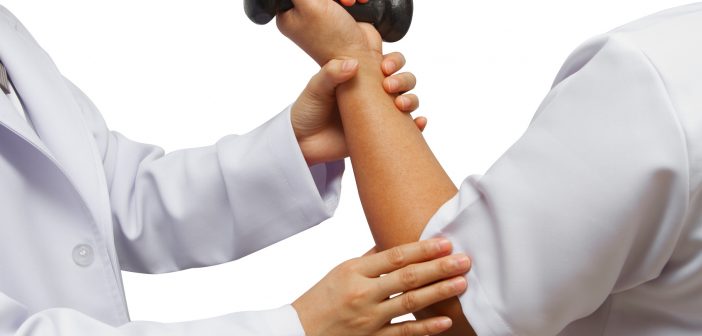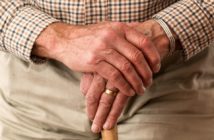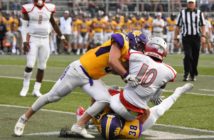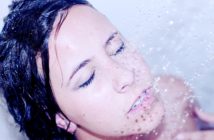For the person whose lifestyle is limited by disease, injury, or disability, occupational therapy can yield remarkable improvement. This healthcare profession facilitates the recovery of impaired life skills. Occupational therapists (OTs) treat people of all ages. Disabled children learn how to manage school and social challenges. Adults with chronic illness develop ways to adapt, and seniors suffering from physical and cognitive decline receive exercises to strengthen weak faculties.
OTs are a unique type of clinician. “With eyes trained on the “big picture,” they find insightful ways to change an environment or task, enabling people to overcome difficult obstacles,” said Therapy Source. Practitioners are at the forefront of research and breakthroughs in the field of rehabilitation.
HAND REHAB
Sonography as a Teaching Tool
In the past, sonography was solely a diagnostic tool. Now it’s playing a significant role in rehabilitation. Sonography is the use of a sensor wand and transmitting gel to deliver high-frequency sound waves into the body. Unlike thermal ultrasound, sonographic imaging instruments do not generate heat. After penetrating skin, sound waves are altered by underlying tissues and reflected back to the wand. The instrument then converts the modified sound waves into electric impulses, creating an image.
When a body part is scanned, people can visualize their muscles, observing the difference between normal and abnormal function. In this way, sonography is a form of visual biofeedback. People learn how to duplicate normal movement when performing functional tasks.
Currently, this sonographic application is in use at the University of Southern California, Occupational Therapy Division. The modality is being evaluated in the rehabilitation of hand injuries. One technique involves scanning a patient’s palm while pinching tweezers, teaching how to move the fingers.
PARKINSON’S DISEASE
Overview
Parkinson’s Disease (PD) is a degenerative brain disorder triggered by a deficiency in dopamine. As a “neurotransmitter,” this chemical relays messages between nerve cells in the brain. Dopamine governs muscle movements, making them smooth and coordinated. In PD, the brain cells that manufacture dopamine progressively die. When roughly 60 to 80 percent of the cells are destroyed, loss of motor control becomes apparent.
Symptoms
Symptoms vary between individuals but typically include:
- tremors
- muscle rigidity
- slowed movement
- shuffling gait
- poor balance
- difficulty swallowing
- diminished facial expression
- impaired speech and writing
Currently, there is no cure for PD. To date, treatment has involved the use of medications to manage symptoms and slow disease progression. Physical therapy is also prescribed to maintain balance and mobility. Now two exercise protocols show great promise for improving quality of life for people with PD.
LSVT LOUD
Studied extensively by the National Institutes of Health, LSVT LOUD trains PD patients to upgrade speech clarity and volume. In the past, PD speech impediments were difficult to treat. Medical and surgical intervention had little benefit. At the University of Colorado-Boulder, LSVT LOUD was initiated with a prototype patient, Mrs. Lee Silverman, for which the treatment is named.
LSVT LOUD improves vocal amplitude by stimulating laryngeal muscles through progressive exercises. The protocol focuses on a single goal, to “speak loud.” The program is conducted in one-hour sessions, four times weekly over one month. Patients learn how to modulate volume so their speech is better understood. Imaging studies show evidence of positive brain changes following LSVT LOUD therapy.
LSVT BIG
LSVT LOUD was the forerunner of LSVT BIG. Encouraged by the success of LSVT LOUD, researchers have recently applied the same principles to treat PD movement disorders. Pioneered at Brodstone Memorial Hospital in Superior, Nebraska, LSVT BIG is being implemented by the OT Department.
People treated with LSVT BIG demonstrate increased trunk rotation, better balance, longer strides, and faster walking. Negotiating stairs is also easier. Treatment involves a commitment to hour-long sessions, four days weekly for one month. Copying the OTs movements, a patient moves forward and back, side-to-side, and in a turning circle. Fine-motor activities are also included.
Home exercises are required, done once daily on clinic days and twice daily on non-clinic days. Patients also perform carryover tasks at home. Every week, a patient must present a record of compliance to their therapist.
One primary way LSVT BIG differs from other exercise protocols is the focus on exaggerated movements. The program trains people to make “bigger” motions, from which LSVT BIG derives its name. By moving expansively, coordination is normalized!
VIRTUAL REHABILITATION
Virtual rehab is the use of video games to create a real-life context for implementing therapy. OTs manipulate the virtual environment to promote progress while people have fun developing skills. Studies show that when people exercise with virtual reality systems, they’re highly engaged, motivated to work harder and longer in therapy. They’re also distracted from pain.
OmniVR
One virtual rehabilitation system in use by OTs is OmniVR. This technology consists of a 3D camera and computer software, enabling people to interact with the virtual world while a therapist tracks their activity. By adjusting system parameters, OTs match exercise difficulty to a person’s ability. Exercises progress as gains are achieved. Categories include seated exercise, wheelchair mobility, gait training, arm exercises, balance, and cognition. OmniVR is utilized in post-stroke rehab, muscle strengthening, and neurological recovery. No computer skills are required.
Nintendo Wii
Another rehab system employed by OTs is Nintendo Wii. The console is commonly used in the aftermath of stroke and joint replacement. Gaming also promotes comfort and mobility in people with osteoarthritis and cancer. Among Wii’s benefits are increased flexibility, strength, balance, eye-hand coordination, cognition, and functional ability. “Wii-Hab” fosters competition, motivating clients to beat their opponents.
In a therapeutic context, Nintendo Wii is the most widely studied gaming console. It offers the advantage of enabling patients to sit and interact with other users. Group therapy helps patients feel socially connected and supported. The camaraderie is especially beneficial for elderly people with limited mobility. Seniors who were previously athletic particularly enjoy “Wii Sports,” with the ability to return to modified physical activity.
THE OT FRONTIER
Three new techniques being used by occupational therapists are:
- sonography for visual biofeedback
- LSVT BIG for movement disorders
- virtual rehabilitation
HOLISTIC THERAPY
OT targets the mind as well as the body. It considers the emotions associated with disability, such as depression and anxiety. Since OT addresses overall capacity, it’s regarded as a “holistic” therapy. OTs view the whole person, their physical, social, and psychological abilities as they manage tasks. Their goal is to help people carry out daily activities in comfort and safety. OTs make rehab both rewarding and fun!




